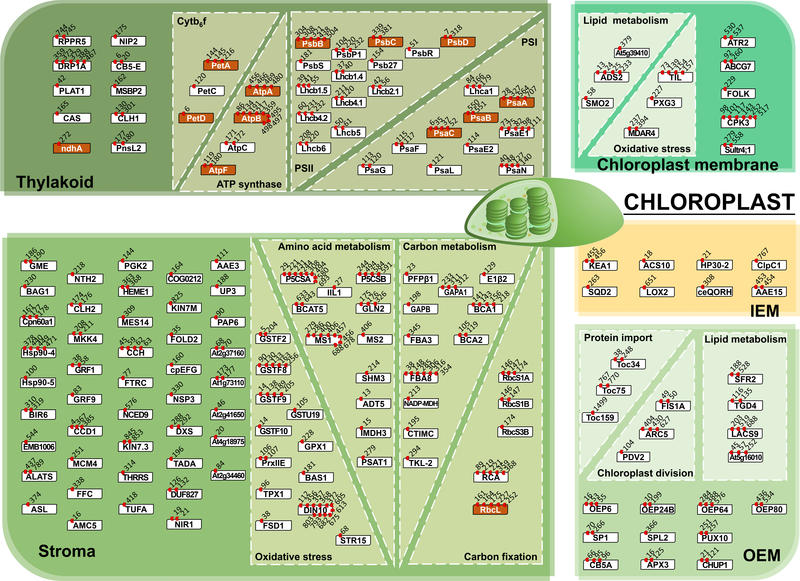Photosynthesis is the basic function within plants that powers all life on Earth. Carried out within the chloroplasts inside plant cells, the photosynthesis process is highly complex, involving machinery made up of many different proteins that carry out different functions.
Like any well-oiled machine, maintenance and upkeep of chloroplasts and their proteins is important. For example, enzymes inside chloroplasts known as proteases act to breakdown unwanted or damaged photosynthesis proteins, ensuring that the process of generating energy from sunlight remains efficient. Understanding the mechanisms behind how this upkeep is carried out is important, as it may reveal new opportunities for adapting or maximising photosynthesis, and improving plant productivity.
A recent study by the Jarvis lab, in collaboration with the Ling lab, and published today in Science Advances, has investigated the mechanisms behind unwanted protein removal from chloroplasts. They discovered that the ubiquitin-proteasome system (UPS), which is a common protein degradation pathway found elsewhere in plant cells, unexpectedly plays a key role in the upkeep of the photosynthesis machinery as well.
Previously, it was thought that the UPS could not be involved in this process, due to the physical barrier that results from chloroplasts having a double-membrane envelope, preventing many larger molecules from passing into chloroplasts.

Ubiquitination systems in chloroplasts are highly complex, with many proteins being targeted. The exciting image attached highlights the different proteins involved in the photosynthesis process, demonstrating the complexity of its maintenance.
The study has found that photosynthesis proteins are processed by a special UPS pathway called CHLORAD, and are destroyed, following their extraction from chloroplasts. This means that the involvement that the UPS in maintaining plant cell functions has a much wider reach than originally expected, and in fact helps to regulate photosynthesis - arguably the most fundamental process of life.
Now that we know that the UPS has direct involvement in chloroplast upkeep, the researchers can investigate how we can maximise its efficacy in keeping photosynthesis running smoothly. By doing so, we could provide new opportunities to improve photosynthesis in cultivated plants, increase crop yields, and contribute to global challenges such as food security and carbon neutrality.
Professor Paul Jarvis, Department of Biology and lead author, said:
“This study reveals that chloroplast protein homeostasis (that is, how chloroplast proteins are maintained and regulated) is remarkably complex – unexpectedly so. We already knew that numerous internal proteases were involved, but now, through this work, we’ve uncovered a major role for the ubiquitin-proteasome system too. So protein homeostasis in chloroplasts is chimeric in nature, incorporating ancient systems inherited from the ancestral endosymbiont, as well as ubiquitin-dependent processes of eukaryotic origin. I find that absolutely fascinating, and of course it opens many new avenues for future investigation.”
Dr Yi Sun, Department of Biology and co-author, said:
“The UPS-dependent CHLORAD system was already well known to act on the protein import machinery at the surface of the chloroplast, breaking down its constituent proteins in order to control which other proteins are imported into the organelle. And we’d previously shown how this in turn influences the organelle’s development and operation. Our new study reveals that CHLORAD in fact acts on a much larger number of target proteins – not just surface proteins, but many in the chloroplast interior. As a result, CHLORAD broadly influences chloroplast functions including photosynthesis and lipid metabolism.”
To read more about this research, published in Science Advances, please visit: https://www.science.org/doi/10.1126/sciadv.abq7352